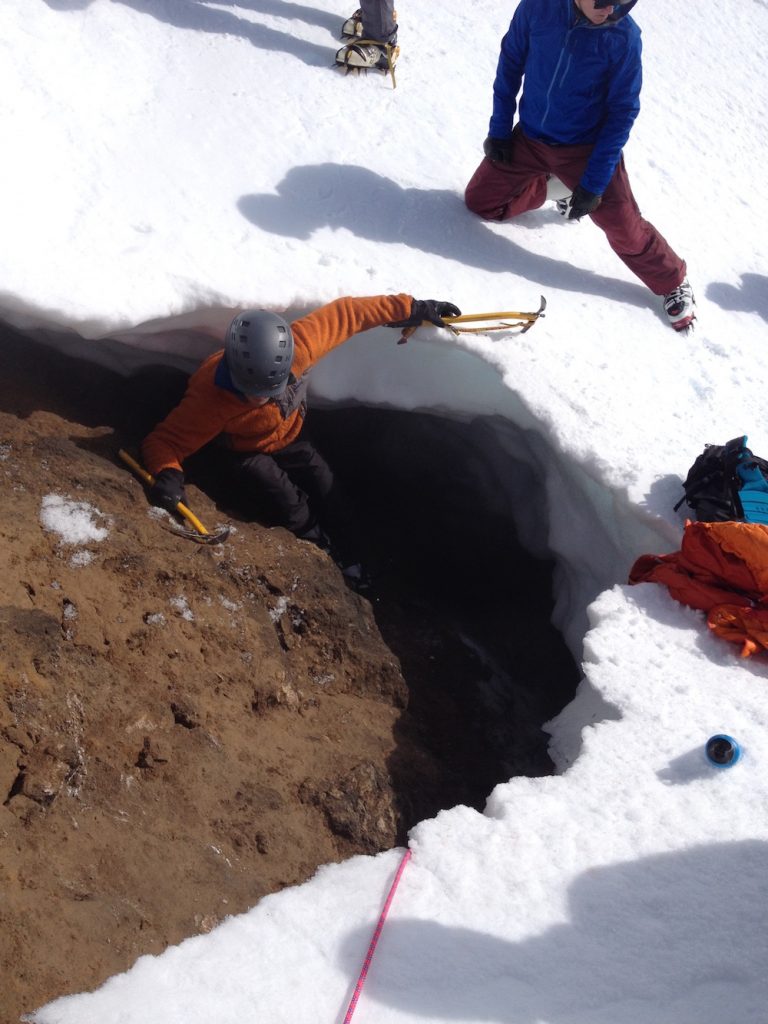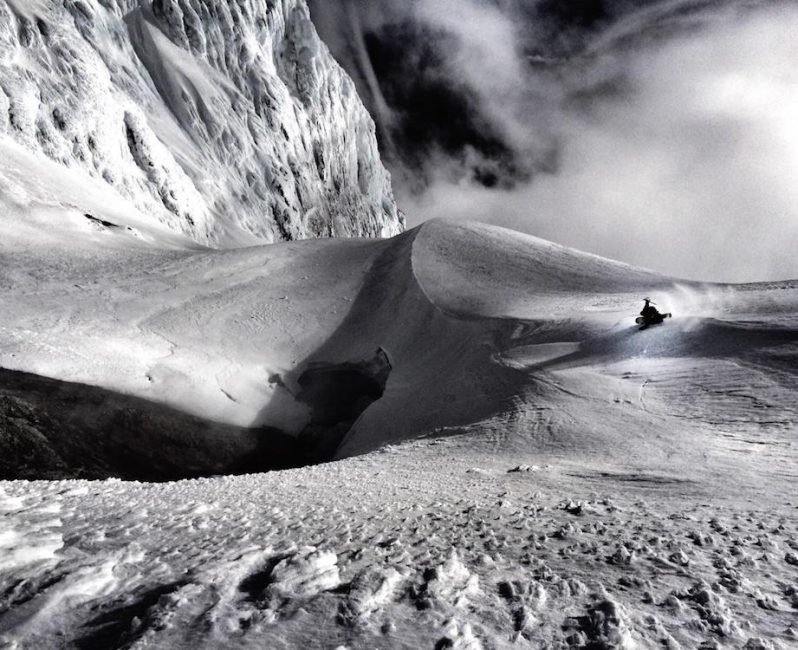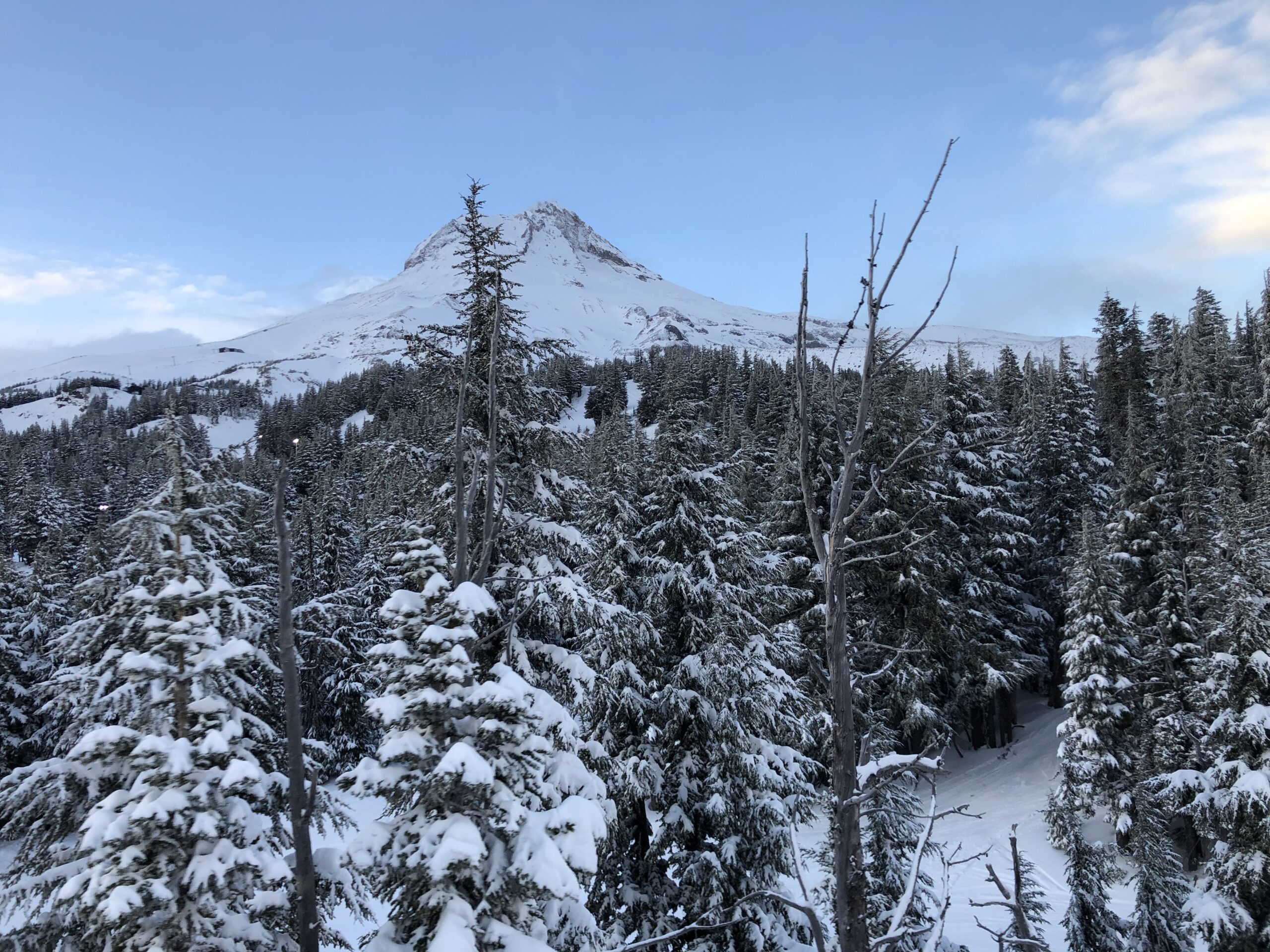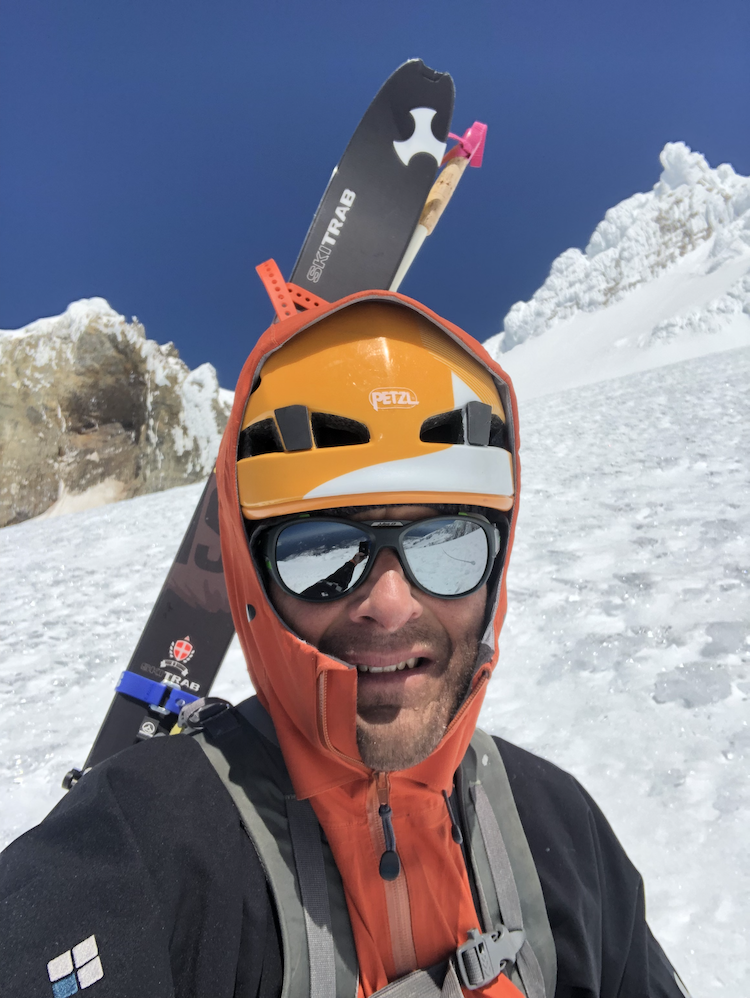Is climate change to blame for Caroline Sundbaum’s terrifying 15-foot fall into a fumarole on Mount Hood?Sundbaum was resting in the snow at the top of the White River Canyon, uphill from the top of Timberline’s Palmer Lift, when the snow beneath her crumbled. She dropped 15 feet into a fumarole, one of those volcanic vents that release hydrogen sulfide on Mount Hood, giving the upper mountain that rotten-egg smell familiar to skiers, snowboarders, and climbers.
Falling into a fumarole can be extremely dangerous. A sudden drop down onto volcanic rock can cause injury or death, and breathing hydrogen sulfide at high concentrations is extremely hazardous. Then there is the matter of how to get out.
Sundbaum was relatively fortunate. An alert nearby climber noticed that she had gone missing and approached to investigate. He found a hole through the snow in the place where Sundbaum had been resting, and he responded decisively, calling 9-1-1 and using a rope to pull Sundbaum. Sundbaum’s climbing partners, who had climbed ahead of her, also returned to the scene to help her to safety. Mountain rescue volunteers from Portland Mountain Rescue also responded to the scene, with backup from Hood River Crag Rats and support from Multnomah and Hood River County sheriffs.
Sundbaum escaped with an injured soldier. But her sudden fall and terrifying ordeal raise a large question about high-elevation recreation on the second-most-climbed mountain in the world:
Is climate change adding to the Mount Hood fumarole risk?
A Changing Mountain
The scene of Sundbaum’s accident — downslope from the better-known fumarole area known as Devil’s Kitchen and east of the unmistakable Hot Rocks on the South Side of Mount Hood — has not been widely considered a fumarole risk in the past. But people who know Mount Hood well can tell you that the mountain is changing in dramatic ways as glaciers melt from global climate change.
“Over the years I’ve made rules that I follow for safe glacier travel,” says Walter Burkhardt, a longtime climber and ski mountaineer who serves with the Crag Rats.” Over the last five years, those rules have gone out the window. Because the solar radiation has been so strong that it has been cutting into the glacier. You’ve got these 200,300-foot deep glacier pads, and the sun is just baking through there and a whole bunch of stuff is melting out. The snow layer is further and further up and the lower glacier is getting nasty.”
All 5,000 of the glaciers in the western United States are melting, according to numerous peer-reviewed scientific studies. It is impossible to predict exactly how the vast melt-down will affect specific areas, but it stands to reason that the ice that has historically covered hidden hazards cannot be relied on indefinitely.
Experienced mountaineers warn that blankets of snow and ice on the upper mountain are not necessarily trustworthy. Fumaroles are often revealed by depressions in the snow surface or open holes in the snow, but as Sundbaum’s ordeal indicates, new danger zones may be developing. .
A few years ago, Portland Mountain Rescue created specific protocols for fumarole rescue. These protocols include monitoring toxic gases, wearing air-purifying respirators, and using safety systems for rapid extraction if something goes wrong. In cases of extremely hazardous air quality, PMR’s protocols prohibit rescuers from entering a fumarole cavity, even to save a life.

In a press release following Sundbaum’s accident, PMR offers cogent advice for anyone considering high-elevation adventures on the changing environment of Mount Hood:
“PMR urges climbers to avoid the fumarole areas on Mt. Hood… If you do not know where the fumarole areas are, ask knowledgeable climbers and research the topic. Know before you go.”
Last modified: December 16, 2020




